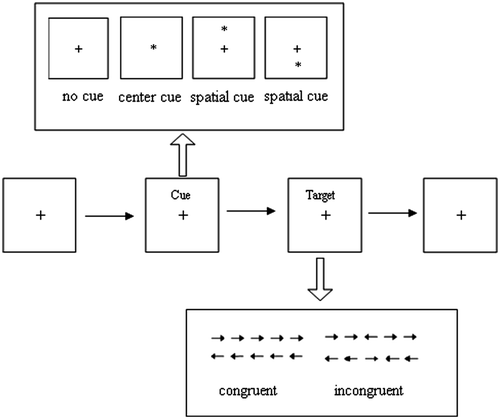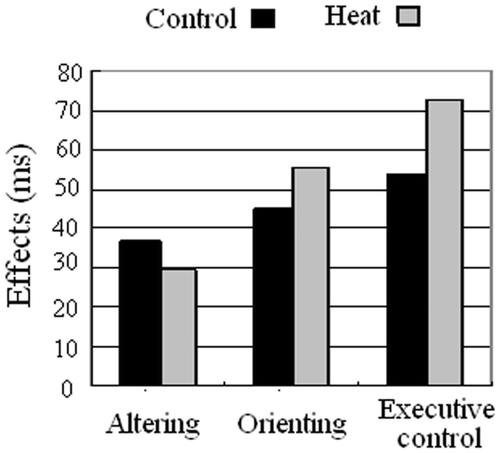Figures & data
Figure 1. Schematic of attention network test in the present study. In each trial a fixation cross appears in the centre of the screen all the time. Depending on the cue condition, a cue condition (no cue, centre, or spatial cue) appears for 200 ms. After a variable duration (300–11 800 ms), the target (congruent or incongruent flankers) are presented until the participant makes a response with a button press, but for no longer than 2000 ms. Once the subjects makes a response, the target disappears immediately and after a variable duration (3000–15 000 ms) the next trial start.

Figure 2. Three ANT effects of RTs, altering, orienting and executive control, in each condition. Heat stress resulted in larger executive control effect, while both the alerting and orienting effects did not show significant changes.

Table 1. RT (ms) and accuracy (%) for each condition (Mean and SD).